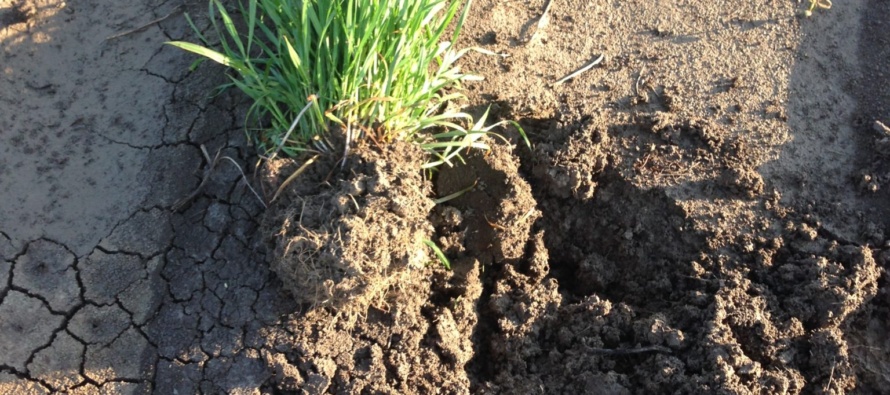Spring Tillage Ineffective for Glyphosate-resistant Italian Ryegrass Control

Related Articles
- 2010 Soybean And Corn Variety Trial Data 3
- Rice Variety Trial Results For 2010, Plus Rice Research Report 0
- Fertilizing Cotton with Poultry Litter 5
Latest Tweets
Controlling glyphosate-resistant (GR) Italian ryegrass is expensive. The most successful management programs require multiple passes across the field and cost approximately $40 to $44 per acre according to the Mississippi State University crop planning budgets. Spending that amount of money on management of one weed species when no crop is present in the field is hard to justify.
 Data generated at the Delta Research and Extension Center indicate that corn and rice are the most sensitive to interference from GR Italian ryegrass. While cotton and soybean are negatively affected by interference from GR Italian ryegrass, they are less sensitive than corn and rice. Poor stand establishment and early-season growth has been observed in all four crops, even when 100% GR Italian ryegrass control is achieved before planting. In soybean, no yield reductions were detected due to the presence of GR Italian ryegrass; however, soybean maturity was delayed 17 days in plots containing GR Italian ryegrass residue compared with weed-free plots. Lengthy delays in maturity have negative implications for harvesting scheduling and logistics.
Data generated at the Delta Research and Extension Center indicate that corn and rice are the most sensitive to interference from GR Italian ryegrass. While cotton and soybean are negatively affected by interference from GR Italian ryegrass, they are less sensitive than corn and rice. Poor stand establishment and early-season growth has been observed in all four crops, even when 100% GR Italian ryegrass control is achieved before planting. In soybean, no yield reductions were detected due to the presence of GR Italian ryegrass; however, soybean maturity was delayed 17 days in plots containing GR Italian ryegrass residue compared with weed-free plots. Lengthy delays in maturity have negative implications for harvesting scheduling and logistics.
The question of using spring tillage to control GR Italian ryegrass is common this time of year. Tillage when Italian ryegrass is small (fall through January where possible) can be an effective control tactic because an implement such as a disk can successfully bury small plants that have not yet developed a massive root system. However, tillage in the spring (late-February to March) with the intent of controlling GR Italian ryegrass is nearly futile.
Once temperatures begin to warm, Italian ryegrass enters a phase of rapid growth, similar to wheat. Italian ryegrass has an extensive fibrous root system. If established and rapidly growing plants are uprooted with a disk, they will generally re-root following the next rainfall. For maximum effectiveness against GR Italian ryegrass, spring tillage would require two to three trips with a disk followed by a harrow to remove soil from the roots. After those multiple trips across the field, a portion of the Italian ryegrass may die if it does not rain. That level of tillage is not always possible due to soil conditions, and it is certainly often impractical, in the spring in the Mississippi Delta. In many areas, if a field dries sufficiently to make three to four tillage passes, it will be too dry to plant.
 A spring burndown herbicide program for GR Italian ryegrass should include the maximum rate of glyphosate plus 16 ounces of Select Max or 8 ounces of 2-lb clethodim formulation. Auxin herbicides like 2,4-D and/or dicamba may be added to the herbicide mixture if the maximum rate of clethodim is utilized.
A spring burndown herbicide program for GR Italian ryegrass should include the maximum rate of glyphosate plus 16 ounces of Select Max or 8 ounces of 2-lb clethodim formulation. Auxin herbicides like 2,4-D and/or dicamba may be added to the herbicide mixture if the maximum rate of clethodim is utilized.
If temperatures remain warm and winter weeds continue to grow rapidly, GR Italian ryegrass will quickly get too large for effective control with clethodim. Paraquat should be used to target GR Italian ryegrass that is > 8 to 10 inches. Large GR Italian ryegrass (12 to 24 inches) will require two applications of paraquat (3 to 4 pints of Gramoxone SL or 2 to 2.67 pints of 3-lb paraquat) spaced 10 to 14 days apart. Photosystem II inhibitors such as atrazine, metribuzin or diuron should be added to paraquat applications to maximize control. Choice of Photosystem II inhibitor depends on the crop to be planted.




Let me tell You a sad story ! There are no comments yet, but You can be first one to comment this article.
Write a comment